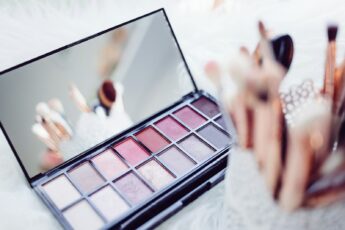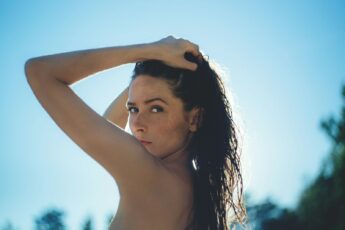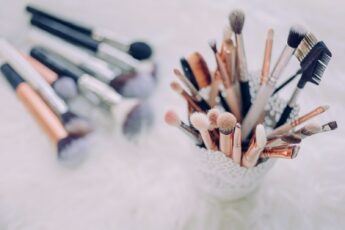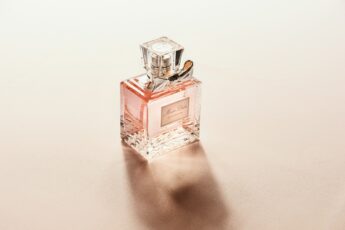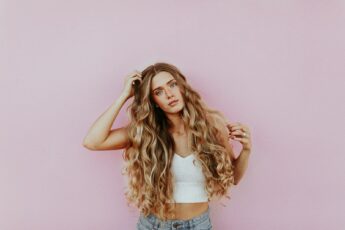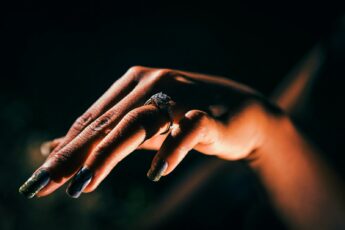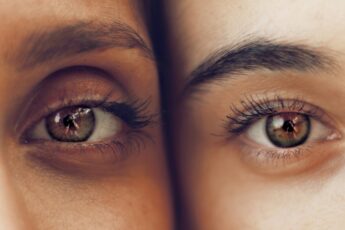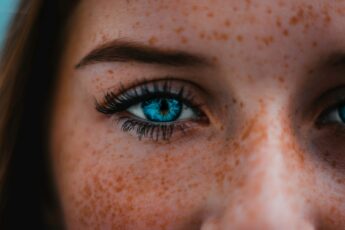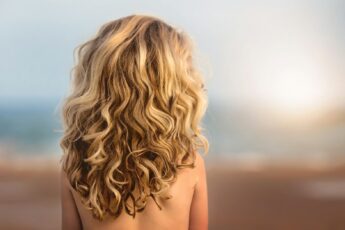Beauty Products – Enhancing Personal Care and Self-Expression
As a beauty industry expert, I’ve seen firsthand how beauty products have transformed over the years. These items go beyond mere cosmetics; they’re tools for self-care and personal expression. From ancient times to today’s high-tech solutions, beauty products have always played a crucial role in human culture.
The world of beauty products is vast and ever-changing. It encompasses everything from basic skincare essentials to cutting-edge anti-aging treatments. Here’s a quick overview of what we’ll explore in this article:
- Skincare fundamentals
- Makeup innovations
- Hair and body care
- Natural and organic options
- Anti-aging solutions
- Fragrances
- Beauty tools and devices
- Sustainable practices
Each category offers unique benefits and addresses different aspects of personal care. Whether you’re a skincare enthusiast or a makeup artist, there’s always something new to discover in this dynamic industry.
Beauty is not in the face; beauty is a light in the heart.
This quote reminds us that while beauty products can enhance our appearance, true beauty comes from within. However, using these products can boost confidence and allow for creative self-expression.
In recent years, the beauty industry has also embraced sustainability and inclusivity. We’re seeing more eco-friendly packaging, diverse shade ranges, and products catering to various skin types and concerns.
In the following chapters, we’ll explore each aspect of beauty products, including their history, current trends, and future innovations. Let’s embark on this journey through the fascinating world of beauty together.
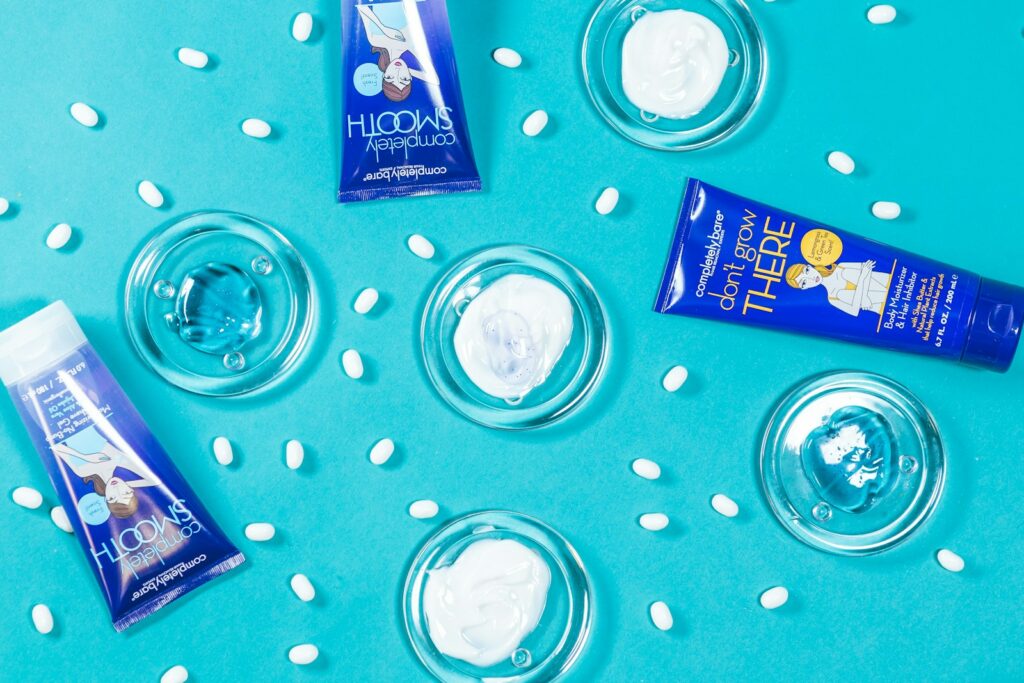
History of Beauty Products
The history of beauty products is as old as civilization itself. Ancient Egyptians pioneered many cosmetic practices we still use today. They created kohl eyeliner, red ochre lip stains, and fragrant oils for skin care. These weren’t merely for aesthetics; they also served religious and medicinal purposes.
As centuries passed, beauty practices evolved across cultures:
- Ancient Greece: Emphasis on natural beauty and hygiene
- Roman Empire: Elaborate hairstyles and perfumes
- Medieval Europe: Pale skin as a sign of nobility
- Renaissance: Rise of poisonous lead-based face powders
- Victorian Era: Subtle makeup and focus on skincare
The modern beauty industry as we know it emerged in the 20th century. Brands like Max Factor and Elizabeth Arden revolutionized cosmetics, making them more accessible to the average person. The rise of Hollywood further popularized makeup, creating new beauty standards and trends.
Beauty begins the moment you decide to be yourself.
This quote encapsulates the shifting attitudes towards beauty products. Today, we see them as tools for self-expression rather than conformity to societal norms.
In recent decades, the beauty industry has undergone rapid change. Digital technology has transformed how we shop for and use beauty products. Social media influencers now shape trends alongside traditional beauty magazines. Meanwhile, advances in science have led to more effective skincare formulations and color cosmetics.
Skincare Essentials
Skincare forms the foundation of any beauty routine. A good skincare regimen typically includes three basic steps: cleansing, toning, and moisturizing. However, modern routines often incorporate additional products for targeted concerns.
Let’s break down the key skincare essentials:
- Cleansers: These remove dirt, oil, and makeup. Options range from gentle foaming washes to oil-based cleansers.
- Toners: They balance skin pH and prepare it for other products. Modern toners often include hydrating ingredients.
- Moisturizers: These hydrate and protect the skin. Different formulations suit various skin types.
- Serums: Concentrated products that target specific skin concerns like aging or hyperpigmentation.
- Sunscreens: Crucial for protecting skin from UV damage. They come in chemical and physical formulations.
| Skin Type | Recommended Cleanser | Ideal Moisturizer |
|---|---|---|
| Oily | Gel-based | Lightweight lotion |
| Dry | Cream-based | Rich cream |
| Sensitive | Fragrance-free | Soothing formula |
| Combination | Balanced pH | Gel-cream hybrid |
When choosing skincare products, consider your skin type and specific concerns. What works for one person may not work for another, and finding the perfect routine is often a process of trial and error.
Skincare is healthcare. Invest time in your skin; it’s going to represent you for a very long time.
This advice underscores the importance of consistent skincare. While makeup can cover imperfections, healthy skin is the best canvas for any beauty look.
The skincare industry continues to innovate. We’re seeing a rise in personalized skincare, with brands offering custom formulations based on individual skin analysis. There’s also growing interest in multi-functional products that combine several benefits in one, streamlining routines for busy consumers.
Makeup Foundations
Makeup foundations form the base of any cosmetic look. They even out skin tone, cover imperfections, and create a smooth canvas for other products. The world of foundations has expanded dramatically in recent years, offering a wide range of formulas and finishes.
Let’s explore the main types of foundation products:
- Liquid Foundations: The most versatile option, suitable for most skin types.
- Powder Foundations: Great for oily skin, offering a matte finish.
- Cream Foundations: Provide full coverage and work well for dry skin.
- Stick Foundations: Convenient for touch-ups and travel.
- Tinted Moisturizers: Offer light coverage with added skincare benefits.
Choosing the right foundation depends on several factors:
- Skin type (oily, dry, combination, sensitive)
- Desired coverage (sheer, medium, full)
- Preferred finish (matte, dewy, satin)
- Skin undertone (cool, warm, neutral)
The right foundation can make you look like you’re wearing no makeup at all.
This quote highlights the importance of finding a foundation that truly matches your skin. When applied correctly, it should enhance your natural complexion, not mask it.
Concealers and color correctors complement foundations. Concealers provide extra coverage for blemishes or dark circles, while color correctors neutralize specific discolorations.
| Color Corrector | Neutralizes |
|---|---|
| Green | Redness |
| Purple | Sallowness |
| Peach | Dark circles |
| Yellow | Bruising |
Application techniques and tools can significantly impact the final result. Beauty sponges, brushes, and even fingers each offer different effects. Experimenting with various methods can help you achieve your desired look.
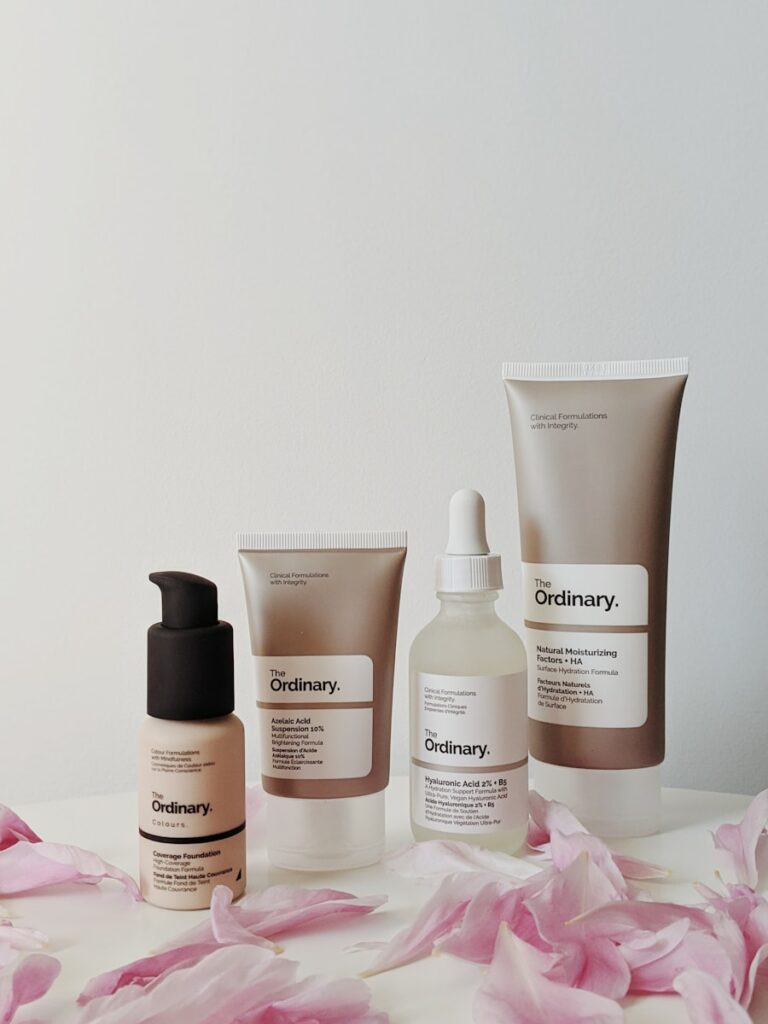
Eye Enhancers
Eyes are often called the windows to the soul, and eye makeup can truly make them stand out. From subtle daytime looks to dramatic evening styles, eye enhancers offer endless possibilities for creativity and self-expression.
Key products in the eye makeup category include:
- Eyeshadows: Available in powder, cream, and liquid formulas. They come in countless colors and finishes.
- Eyeliners: Can be pencil, liquid, or gel. They define the eyes and can create various effects.
- Mascaras: Enhance lashes by adding length, volume, or curl.
- Brow Products: Shape and fill in eyebrows, framing the face.
Eyeshadow palettes have become increasingly popular, offering coordinated color stories for easy look creation. Some popular eyeshadow techniques include:
- Smokey eye
- Cut crease
- Halo eye
- Monochromatic look
Eyes are the doorway to the soul, and makeup is the key to making them shine.
This quote emphasizes how eye makeup can enhance one’s natural beauty and expressiveness.
Eyeliners come in various styles:
| Eyeliner Type | Best For |
|---|---|
| Pencil | Soft, smudged looks |
| Liquid | Precise lines and wings |
| Gel | Long-lasting wear |
| Kohl | Intense, smoky effects |
Mascara innovations have introduced curved wands, fiber formulas, and even lash-enhancing ingredients. For those seeking more dramatic results, false lashes or lash extensions provide additional options.
Brow products have gained prominence in recent years. From pencils and powders to gels and pomades, there are numerous ways to achieve perfectly groomed brows. The trend has shifted from thin, arched brows to fuller, more natural shapes.
As with all makeup, proper removal of eye products is crucial for maintaining healthy skin and lashes. Gentle yet effective eye makeup removers help prevent irritation and premature aging around this delicate area.
Lip Products
Lip products can transform a look in seconds. They add color, define shape, and even nourish the delicate skin of the lips. The variety of lip products available today is staggering, ranging from subtle tints to bold, long-lasting colors.
Key categories of lip products include:
- Lipsticks: Traditional bullet lipsticks come in various finishes like matte, cream, and satin.
- Lip Glosses: Provide shine and sometimes a hint of color.
- Lip Liners: Define the lip shape and prevent color bleeding.
- Lip Stains: Offer long-lasting color that withstands eating and drinking.
- Lip Balms: Moisturize and protect the lips.
A smile is the best makeup any girl can wear.
This quote reminds us that while lip products can enhance our appearance, genuine happiness is the most beautiful feature.
Lip color trends change frequently, but some shades remain classic:
| Shade | Mood |
|---|---|
| Red | Bold, confident |
| Nude | Natural, everyday |
| Pink | Feminine, youthful |
| Plum | Sophisticated, dramatic |
Long-lasting formulations have become increasingly popular. These often come in liquid form and dry down to a transfer-proof finish. While they offer extended wear, they can sometimes feel drying, so proper lip care is essential.
Lip plumpers are another innovation in this category. They typically contain ingredients that temporarily increase blood flow to the lips, creating a fuller appearance. However, results are temporary and individual experiences may vary.
For those seeking a more natural look, tinted lip balms offer a perfect compromise. They provide moisture and a subtle hint of color, ideal for everyday wear.
Nail Care and Polish
Nail care extends beyond mere aesthetics; it’s an essential part of hand hygiene and overall grooming. A well-maintained set of nails can elevate any look and boost confidence.
The nail care routine typically involves these steps:
- Cleaning and shaping
- Cuticle care
- Moisturizing
- Base coat application
- Color polish (if desired)
- Top coat for protection
Nail polishes come in countless colors and finishes. From classic cremes to sparkly glitters, there’s a polish for every preference and occasion.
Your hands are always on display, treat them like jewels.
This advice emphasizes the importance of nail care as part of overall grooming and self-presentation.
Key products in nail care include:
- Base Coats: Protect nails from staining and help polish adhere better.
- Top Coats: Seal in color and add shine or special effects.
- Strengtheners: Fortify weak or brittle nails.
- Cuticle Oils: Nourish and soften cuticles.
The rise of gel polishes has revolutionized the nail industry. These polishes, cured under UV or LED light, offer chip-free wear for up to two weeks. However, they require proper application and removal to prevent nail damage.
| Polish Type | Pros | Cons |
|---|---|---|
| Traditional | Easy to apply and remove | May chip quickly |
| Gel | Long-lasting, high shine | Requires special removal |
| Dip Powder | Durable, no UV light needed | It can be damaging if not properly removed |
For those who prefer a natural look, nail treatments can improve the appearance of bare nails. These include ridge fillers, brightening treatments, and nourishing oils.
The nail art trend has also exploded in recent years. From simple accent nails to intricate designs, nail art allows for personal expression through tiny canvases on our fingertips.
Remember, healthy nails start with proper nutrition and hydration. A balanced diet rich in biotin, iron, and other nutrients can promote strong, beautiful nails from the inside out.
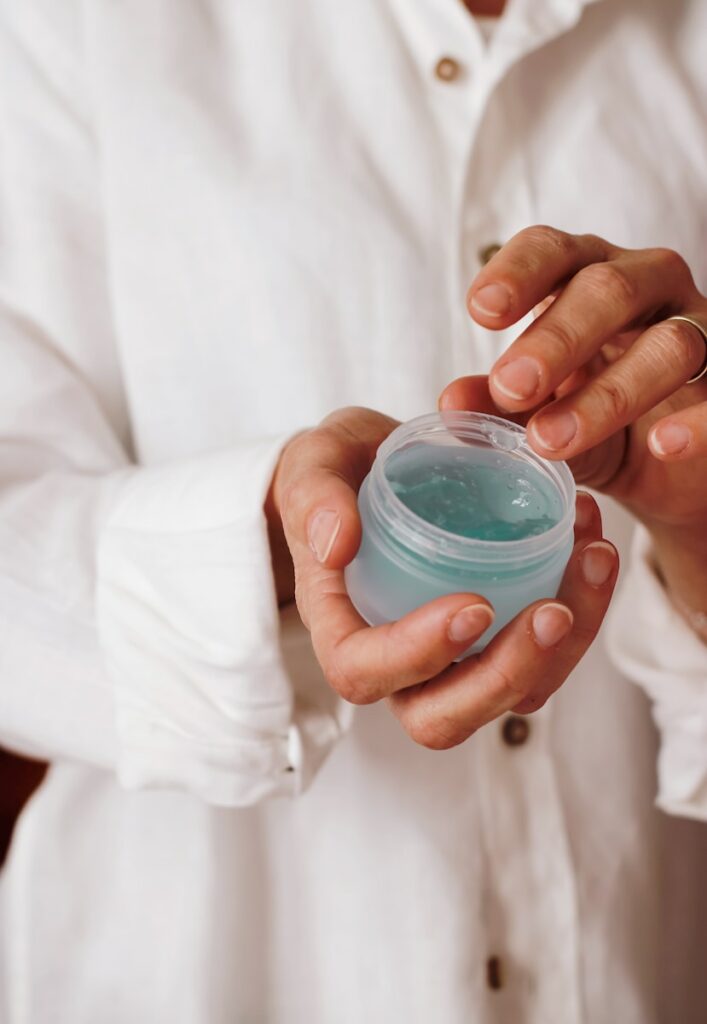
Hair Care Products
Hair care is a crucial part of personal grooming. Healthy, well-maintained hair can significantly boost one’s appearance and confidence. The hair care industry offers a wide range of products to address various hair types and concerns.
Key hair care products include:
- Shampoos: Cleanse the scalp and hair
- Conditioners: Moisturize and detangle
- Hair Masks: Provide deep conditioning
- Leave-in Treatments: Offer ongoing protection and nourishment
- Styling Products: Help achieve desired looks
Your hair is the crown you never take off.
This quote underscores the importance of proper hair care in overall appearance.
Choosing the right products depends on your hair type:
| Hair Type | Recommended Products |
|---|---|
| Oily | Clarifying shampoo, lightweight conditioner |
| Dry | Moisturizing shampoo, deep conditioner |
| Curly | Sulfate-free shampoo, leave-in conditioner |
| Fine | Volumizing shampoo, lightweight products |
Hair styling tools also play a crucial role in hair care. These include:
- Hair dryers
- Flat irons
- Curling wands
- Hairbrushes
While these tools can help achieve desired styles, it’s important to use them properly to prevent heat damage.
Hair color products have evolved significantly. From temporary sprays to permanent dyes, there are options for every commitment level. Many modern formulas include nourishing ingredients to minimize damage during the coloring process.
For those dealing with hair loss or thinning, the market offers various solutions such as:
- Thickening shampoos and conditioners
- Scalp treatments
- Hair growth supplements
Remember, healthy hair starts with a healthy scalp. Regular cleansing, proper nutrition, and minimizing heat styling can go a long way in maintaining beautiful, vibrant hair.
Body Care Essentials
Body care extends beyond basic hygiene; it’s about nourishing and pampering your skin from head to toe. A good body care routine can improve skin texture, address specific concerns, and provide a sensory experience that enhances overall well-being.
Essential body care products include:
- Body Washes: Cleanse the skin without stripping natural oils
- Body Scrubs: Exfoliate dead skin cells for smoother texture
- Body Lotions: Hydrate and soften the skin
- Body Butters: Provide intense moisture for very dry skin
- Deodorants: Control body odor
Take care of your body. It’s the only place you have to live.
This quote emphasizes the importance of body care as part of overall health and self-care.
When choosing body care products, consider your skin type and concerns:
| Skin Concern | Recommended Ingredients |
|---|---|
| Dryness | Hyaluronic acid, glycerin |
| Roughness | Alpha-hydroxy acids, urea |
| Sensitivity | Colloidal oatmeal, aloe vera |
| Aging | Retinol, peptides |
Body washes come in various formulations:
- Gel: Suitable for normal to oily skin
- Cream: Ideal for dry or sensitive skin
- Oil: Provides extra moisture and a luxurious feel
Body scrubs can be physical (with granules) or chemical (with acids). While physical scrubs offer immediate results, chemical exfoliants provide gentler, more consistent exfoliation over time.
Moisturizing is crucial after bathing or showering. Lotions are lightweight and absorb quickly, while body butters offer intense hydration for very dry skin. For best results, apply moisturizer to damp skin to lock in hydration.
Deodorants and antiperspirants are essential for many people. While deodorants mask odor, antiperspirants reduce sweat production. Natural alternatives have gained popularity, such as using ingredients like baking soda or essential oils to control odor.
Specialized body care products address specific concerns like cellulite, stretch marks, or uneven skin tone. While these can help improve skin appearance, consistency in use is key for noticeable results.
Remember, body care is about more than appearance. It’s an opportunity for self-care and relaxation. Taking time to care for your body can be a rewarding ritual that promotes overall well-being.
Natural and Organic Beauty
The demand for natural and organic beauty products has skyrocketed in recent years. Consumers are becoming more conscious about what they put on their skin and the environmental impact of their choices. This shift has led to a boom in plant-based ingredients, eco-friendly packaging, and stricter certification standards.
Key aspects of natural and organic beauty include:
- Plant-based ingredients
- Minimal processing
- Absence of synthetic chemicals
- Environmentally friendly practices
- Cruelty-free testing
Nature itself is the best physician.
This quote reflects the growing belief that natural ingredients can be as effective as synthetic ones in skincare and cosmetics.
Common natural ingredients in beauty products:
| Ingredient | Benefits |
|---|---|
| Aloe Vera | Soothing, hydrating |
| Jojoba Oil | Moisturizing, balancing |
| Tea Tree | Antibacterial, clarifying |
| Rosehip | Anti-aging, brightening |
It’s important to note that “natural” doesn’t always mean “better” or “safer.” Some natural ingredients can cause irritation or allergic reactions. Always patch-test new products, regardless of their origin.
Certification standards help consumers identify truly natural and organic products. Some reputable certifications include:
- USDA Organic
- COSMOS
- NATRUE
- Ecocert
These certifications have different criteria, but all aim to ensure product integrity and transparency.
Eco-friendly packaging is another crucial aspect of natural beauty. Brands are innovating with:
- Recyclable materials
- Biodegradable packaging
- Refillable containers
- Plastic-free options
While natural and organic products often come with a higher price tag, many consumers find the benefits worth the cost. As demand grows, we can expect to see more innovation and accessibility in this sector of the beauty industry.
Men’s Grooming Products
The men’s grooming industry has experienced significant growth and evolution. Gone are the days when men’s care products were limited to basic soap and shaving cream. Today, men have access to a wide range of specialized products catering to various needs and preferences.
Key categories in men’s grooming include:
- Shaving and beard care
- Skincare
- Hair care
- Body care
- Fragrances
Grooming is the secret of real elegance.
This quote emphasizes that good grooming is fundamental to a polished appearance.
Shaving and beard care products form the cornerstone of many men’s grooming routines:
| Product | Purpose |
|---|---|
| Shaving Cream | Lubricates for a smooth shave |
| Aftershave | Soothes and disinfects |
| Beard Oil | Moisturizes and softens facial hair |
| Beard Balm | Styles and conditions beard |
Men’s skincare has seen significant innovation. Products now address specific concerns like:
- Oily skin and acne
- Fine lines and wrinkles
- Dark circles and puffiness
- Sun damage
Many brands offer complete skincare systems tailored for men, simplifying the process of building a routine.
Hair care for men extends beyond traditional shampoo. Popular products include:
- Styling pomades and clays
- Hair thickening solutions
- Scalp treatments
- Color-enhancing shampoos
Body care products for men often feature more masculine scents and no-nonsense packaging. Options include:
- 2-in-1 body wash and shampoo
- Targeted body lotions (e.g., for rough hands or feet)
- Specialized deodorants and antiperspirants
The men’s fragrance market offers a wide array of scents, from fresh and sporty to deep and woody. Many men now own multiple fragrances for different occasions.
As the men’s grooming industry continues to expand, we’re seeing more gender-neutral products and marketing. This shift reflects changing attitudes towards masculinity and self-care. The focus is increasingly on individual needs and preferences rather than traditional gender norms.
Anti-Aging Solutions
The quest for youthful skin has driven significant innovation in the beauty industry. Anti-aging products aim to prevent or reduce signs of aging, such as wrinkles, fine lines, and loss of firmness. These products often incorporate advanced ingredients and technologies to deliver visible results.
Key components in anti-aging skincare include:
- Retinoids: Derivatives of Vitamin A that promote cell turnover
- Peptides: Short chains of amino acids that support collagen production
- Antioxidants: Molecules that protect against free radical damage
- Hyaluronic Acid: A hydrating ingredient that plumps the skin
- Sunscreen: Crucial for preventing premature aging from UV exposure
Aging is a fact of life. Looking your age is not.
This quote encapsulates the philosophy behind anti-aging skincare: embracing the aging process while maintaining healthy, vibrant skin.
Popular anti-aging ingredients and their benefits:
| Ingredient | Primary Benefit |
|---|---|
| Retinol | Reduces fine lines and wrinkles |
| Vitamin C | Brightens and evens skin tone |
| Niacinamide | Improves skin elasticity |
| Glycolic Acid | Exfoliates and smooths texture |
Anti-aging routines often involve multiple steps and products. A typical regimen might include:
- Gentle cleanser
- Toner or essence
- Targeted serum
- Eye cream
- Moisturizer
- Sunscreen (during the day)
Non-invasive treatments have also gained popularity as alternatives or complements to topical products. These include:
- Microdermabrasion
- Chemical peels
- LED light therapy
- Microneedling
While these treatments can be effective, they should be performed by trained professionals to ensure safety and optimal results.
It’s important to note that prevention is key in anti-aging skincare. Starting a good skincare routine early, protecting skin from sun damage, and maintaining a healthy lifestyle can significantly impact how skin ages over time.
Fragrance and Perfumery
The world of fragrances is complex and fascinating. Perfumes can evoke emotions, trigger memories, and complete a personal style. Understanding the basics of fragrance can help you choose and appreciate scents.
Key terms in perfumery:
- Notes: Individual scents in a fragrance
- Accord: A blend of notes that create a new, unified scent
- Sillage: The trail left by a fragrance
- Longevity: How long a fragrance lasts on the skin
A woman who doesn’t wear perfume has no future.
This provocative quote highlights the cultural significance of fragrance in personal presentation.
Fragrance concentrations and their typical longevity:
| Type | Oil Concentration | Longevity |
|---|---|---|
| Parfum | 20-30% | 6-8 hours |
| Eau de Parfum | 15-20% | 4-5 hours |
| Eau de Toilette | 5-15% | 2-3 hours |
| Eau de Cologne | 2-4% | Up to 2 hours |
Fragrance families help categorize scents:
- Floral: Rose, jasmine, lily
- Oriental: Vanilla, musk, amber
- Woody: Sandalwood, cedar, patchouli
- Fresh: Citrus, aquatic, green
Many modern fragrances are complex blends that don’t fit neatly into one category.
The fragrance industry has seen several trends in recent years:
- Niche perfumes: Unique, often more concentrated scents
- Unisex fragrances: Scents marketed for all genders
- Natural and organic perfumes: Using essential oils and plant-based ingredients
- Customizable fragrances: Allowing consumers to create their own scent blends
When choosing a fragrance, it’s important to consider:
- Personal preferences
- Skin chemistry (scents can smell different on different people)
- Occasion and season
- Longevity and sillage are desired
Remember, the best fragrance is one that makes you feel confident and comfortable. Don’t be afraid to experiment with different scents to find your signature fragrance.
Beauty Tools and Devices
The beauty industry has embraced technology, leading to an array of innovative tools and devices. These gadgets aim to enhance the effectiveness of skincare routines and makeup applications, offering professional-level results at home.
Key categories of beauty tools include:
- Makeup brushes and sponges
- Facial massage tools
- Cleansing devices
- Light therapy devices
- Hair styling tools
The right tool can make all the difference in your beauty routine.
This quote emphasizes the importance of using appropriate tools for optimal results.
Popular beauty tools and their uses:
| Tool | Purpose |
|---|---|
| Beauty Blender | Seamless makeup application |
| Gua Sha | Facial massage and lymphatic drainage |
| Clarisonic | Deep cleansing and exfoliation |
| LED Mask | Light therapy for various skin concerns |
| Dyson Airwrap | Versatile hair styling |
Makeup brushes have evolved significantly. Synthetic fibers now offer cruelty-free alternatives that perform as well as natural hair brushes. Specialized shapes cater to specific application techniques, from precise eyeliner to airbrushed foundation.
Facial rollers and gua sha tools have gained popularity for their purported benefits:
- Improved circulation
- Reduced puffiness
- Enhanced product absorption
- Relaxation and stress relief
While these tools can enhance a skincare routine, it’s important to use them correctly to avoid irritation or damage.
High-tech skincare devices often incorporate multiple functions:
- Cleansing and exfoliation
- LED light therapy
- Microcurrent stimulation
- Radiofrequency treatment
These devices can be a significant investment, but many users find them worthwhile for the long-term benefits and convenience of at-home treatments.
Hair styling tools continue to advance, with features like:
- Heat control technology
- Ionic conditioning
- Multi-functionality
When choosing beauty tools, consider factors like ease of use, maintenance requirements, and compatibility with your existing routine. While gadgets can be exciting, they should complement, not complicate, your beauty regimen.
Sustainable Beauty Practices
The beauty industry is increasingly focusing on sustainability, responding to consumer demand for environmentally friendly products and practices. Sustainable beauty encompasses everything from ingredient sourcing to packaging and production methods.
Key aspects of sustainable beauty include:
- Eco-friendly packaging
- Ethical ingredient sourcing
- Cruelty-free and vegan formulations
- Water conservation
- Reduced carbon footprint
We don’t need a handful of people doing zero waste perfectly. We need millions of people doing it imperfectly.
This quote reminds us that small, consistent efforts toward sustainability can make a significant impact.
Sustainable packaging options in beauty:
| Type | Benefits |
|---|---|
| Glass | Recyclable, reusable |
| Aluminum | Infinitely recyclable |
| Post-consumer recycled plastic | Reduces new plastic production |
| Biodegradable materials | Compostable, reduces waste |
Refillable packaging has gained traction as a way to reduce waste. Brands now offer refill options for products like:
- Lipsticks
- Compacts
- Skincare creams
- Shampoos and conditioners
Zero-waste beauty products eliminate packaging altogether. These include:
- Solid shampoo bars
- Naked facial oils
- Packaging-free lotion bars
- Reusable makeup remover pads
Ethical ingredient sourcing is another crucial aspect of sustainable beauty. This involves:
- Fair trade practices
- Sustainable harvesting methods
- Organic farming
- Upcycled ingredients
Many brands are also focusing on water conservation, recognizing the beauty industry’s significant water usage. Waterless formulas and concentrated products help reduce water consumption both in production and use.
To embrace sustainable beauty, consumers can:
- Choose products with minimal, recyclable packaging
- Opt for brands with transparent sustainability practices
- Use products fully before purchasing new ones
- Recycle or upcycle empty beauty containers
- Consider multi-use products to reduce overall consumption
While perfect sustainability may be challenging, every small choice can contribute to a more environmentally friendly beauty industry.
Conclusion
The world of beauty products is vast and ever-evolving. From ancient cosmetics to cutting-edge skincare technology, the industry continues to innovate and adapt to changing consumer needs and values. As we’ve explored in this article, beauty products encompass a wide range of categories, each with its own unique characteristics and benefits.
Key takeaways from our journey through beauty products:
- Skincare forms the foundation of most beauty routines
- Makeup offers endless possibilities for self-expression
- Hair and nail care are essential aspects of overall grooming
- Men’s grooming has become a significant market segment
- Anti-aging solutions continue to advance with science
- The fragrance remains a powerful tool for personal branding
- Beauty tools and devices bring professional results home
- Sustainability is shaping the future of the industry
Beauty is not in the face; beauty is a light in the heart.
This quote reminds us that while beauty products can enhance our appearance, true beauty comes from within.
The beauty industry faces several challenges and opportunities:
| Challenges | Opportunities |
|---|---|
| Sustainability concerns | Eco-friendly innovations |
| Ingredient safety | Transparency and clean beauty |
| Inclusivity | Diverse shade ranges and formulations |
| Digital disruption | Personalized beauty solutions |
As consumers become more informed and conscious, we can expect to see continued growth in:
- Natural and organic products
- Personalized skincare and cosmetics
- Multi-functional products
- Tech-enabled beauty devices
The future of beauty products lies in balancing efficacy, sustainability, and individual needs. As the industry evolves, it will be exciting to see how new technologies and shifting cultural values shape the products we use to look and feel our best.
Remember, the most important aspect of any beauty routine is how it makes you feel. Choose products that align with your values, suit your needs, and bring you joy in your self-care journey.
